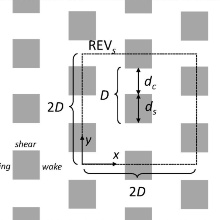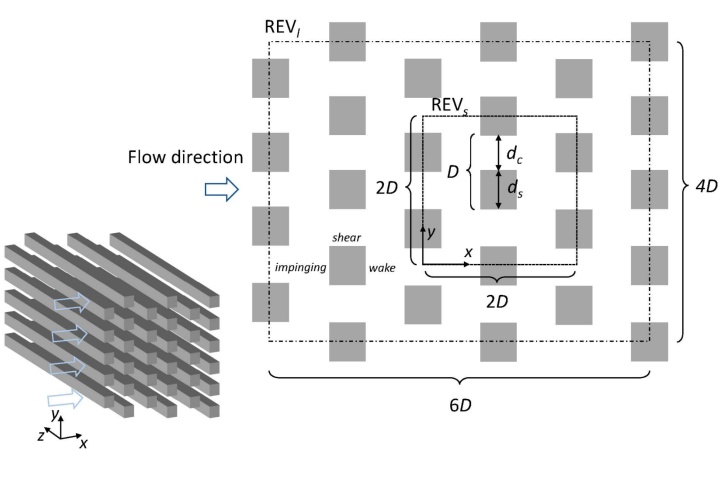The SFB 1313 publication entitled "Direct numerical simulation of convective heat transfer in porous media" by Xu Chu, Guang Yang, Sandeep Pandey, and Bernhard Weigand is a work within SFB 1313's research project A02
Abstract
Convective heat transfer in turbulent flow in porous media is, in general, less understood compared to laminar and creeping flows. It is broadly integrated into industrial applications even though a lack of understanding in microscale. In the present study, we report a direct numerical simulation (DNS) based microscopic analysis of heat and fluid flow in synthetic porous media with an aim to link the macroscopic statistics and qualitative observations with pore-scale signatures of the same. DNS is conducted with two computational codes with a cautious validation on the microscale. The conventional finite-volume solver shows an excellent agreement with high-order spectral/hp element solvers. The synthetic porous media are comprised of square cylinders in a staggered array. Macroscopic observation indicates an increased pressure loss and increased Nusselt number (Nu) as a result of high Reynolds numbers. However, a further examination of the ratio of Stanton number to skin friction coefficient
St / Cf reveals that increasing Reynolds numbers lead to more pressure loss than improved heat transfer. Microscopic analysis shows that Nu is highest on the impinging surface, whereas lowest on the wake surface. In addition, it tends to be homogeneously distributed on surface area in the high porosity case. In the low porosity case, Nu on the sharp corners, is significantly higher than on other locations. Probability density function (PDF) of streamwise velocity fluctuation u' shows Gaussian like distribution within two standard deviation. The high porosity group owns a spike around zero abscissa on PDF of both u' and temperature fluctuation T', which is an indication of less chaotic flow motions.



